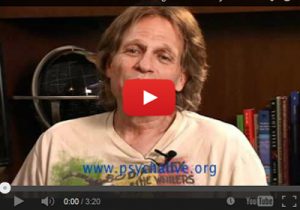The Paradox of Psychological Defenses

Should we contend with painful realities or avoid them?
Although psychological defenses offer a degree of comfort and a form of security, they also predispose distortion and maladaptation in adult life. Yet varying degrees of defense formation are a virtual necessity for the developing child. All children experience a certain amount of emotional pain and frustration in their developmental years starting as early as infancy. The newborn is maximally vulnerable and fully reactive to stress yet psychological trauma and parental mis-attunement are difficult to detect from the outside during this period. It is a time when the brain is developing rapidly and emotional experiences are being hardwired, and the infant has no words or language to express or explain its emotional state.
Even in a relatively benign atmosphere, some damage occurs because of the infant’s heightened reactivity to sensory inputs, e.g., overstimulation and/or under-stimulation. The prolonged dependence of the human infant on his/her parents for physical and psychological survival provides the first condition for defense formation. According to Guntrip (1961), “The infant’s need for ‘reliable maternal support is so absolute and failure to provide it so nearly universal that ‘varying degrees of neurotic instability…are the rule rather than the exception’” (p. 385). Seemingly innocuous interactions with an insensitive parent can seriously affect the child’s well-being. Even relatively ‘good’ parents have certain limitations and deficits that are damaging to the child’s emerging self.
During the first 18 months of life, important neuronal connections are being laid down in the infant’s or toddler’s brain. When the child experiences harsh or alarming interactions with a parent, the stress that is experienced can make it difficult for the child to generate words for feelings or create a meaningful story of his/her inner life. Physically abused children show high levels of negative affect, while neglected children demonstrate flattened affect. But the worst-case scenario is found in a child who experiences both abuse and neglect (Schore, 2003). There is agreement that severe trauma of interpersonal origin may override any genetic, constitutional, social, or psychological resilience factor. Regarding the long-term effects of neglect, maltreatment, and other toxic environmental factors on adult functioning, research has shown that the number of adverse childhood experiences is proportional to the severity of adult medical and psychological disorders (Edwards et al, 2003).
Sadly, even if the child survived the stress of interpersonal trauma relatively unscathed, he/she would have to cope with the painful effects of existential angst. Death fears alone constitute sufficient cause for defense formation.
There is a core conflict within each person that centers on the choice between contending with painful realities or avoiding them. The question is whether to live with emotional pain or to defend ourselves and escape into an unreal world. We are all presented with this fundamental dilemma. The resolution of this conflict toward a more defended way of life has a generally detrimental effect on an individual’s emotional health and overall functioning, yet the formation of psychological defenses is inevitable when anxiety and emotional pain build up in the developing child.
Description of a Defended Lifestyle
When people are defended, they tend to neutralize their experiences and lose considerable feeling for themselves and others. In this self-protective state, their gaze is focused inward on themselves rather than outward toward others. Their capacity for offering and accepting love is impaired, and they tend to limit personal transactions of both giving and receiving.
In The Enemy Within: Separation Theory and Voice Therapy, I emphasize that this inward state needs to be distinguished from time spent alone in self-reflection, introspection, creative work, meditation, or other spiritual and intellectual pursuits. Essentially, it involves a process of regarding oneself more as an object than as a person. Each individual develops idiosyncratic ways of dulling and deadening him or herself and disconnecting from unpleasant emotions and life experiences.
The major characteristics of the inward or defended person include: (a) a loss of feeling and varying degrees of depersonalization; (b) a tendency toward reliance on addictive, self-nourishing substances and behaviors; (c) a preference for isolation and fantasy gratification over satisfaction derived from real achievements or in an intimate relationship; and (d) generally cynical, suspicious attitudes toward others and self-critical, self-hating attitudes toward oneself.
Basically, psychological defenses such as rationalization, repression, denial, and projection limit life experience; distort one’s perception of reality; predispose maladaptive responses; avoid necessary risk-taking; and play a significant part in repetition compulsion –people tend to repeat the same mistakes and dysfunctional relationship choices. Finally, defenses negatively impact interpersonal relationships, particularly with one’s romantic partner or one’s children. They contribute to a misreading of people’s intentions and a general mis-attunement to others.
A person can’t be innocently defended. Being defended not only hurts you, but it also hurts others, particularly those closest to you. Being defended tends to preclude or interfere with the development of genuine and satisfying relationships. It leaves you feeling isolated and potentially paranoid around those with whom you could otherwise enjoy warm and intimate exchanges.
To the extent you are defended, you are cut off from being able to experience genuine feeling — the good, the bad and the ugly. To varying degrees, you walk through your life in a numbed state.
Defended individuals suffer from guilt reactions, especially existential guilt. They experience a sense of regret for a life not fully lived. Furthermore, they are at the mercy of self-critical thoughts about being defended or unavailable. A defended life leaves people with a powerless feeling and keeps them connected to their past, in spite of how miserable it might have been.
Although we may partially recognize that we no longer need the kind of protection our defenses once offered, we often hold onto them as if our life depended on it. For example, why do so many people still maintain a distorted or even negative view of themselves, regardless of how unrealistic it is? Why is it so difficult to change this false identity or give up other habitual defenses even when we come to understand their harmful effects?
Lastly, the defended person’s life is often characterized by a desperate clinging to addictive attachments and a reliance on self-soothing, self-nourishing habit patterns. Because these defensive patterns feed on themselves and eventually become habitual, there is a progressive debilitation in broad areas of functioning. These patterns not only cause people to lose energy, but they also negatively affect significant areas of their lives and limit their initiative.
In summary, all humans are susceptible to a certain degree of trauma in their developmental years and tend to develop defenses to ward off pain. Although these self-protective mechanisms offer a certain degree of relief, they also lead to distortion and maladaptive behaviors in adult life. Individuals who are more defended tend to be inward and isolated, limited emotionally, distrustful, and insecure. They rely heavily on self-comforting substances and routines, and have problems in maintaining satisfying personal relationships.
In contrast, individuals who are less defended tend to feel freer and have a greater potential for experiencing their emotions, including an increased capacity to feel the joy and happiness of life as well as a higher tolerance for intimacy. They are also more cognizant of the pain inherent in living and appear to be more responsive and adaptive to events that impinge upon their wellbeing. People who are relatively undefended generally feel more integrated, are able to live more fully and authentically, and tend to be more humane toward others.
Given the obvious advantages of non-defensive living, how can we come to recognize and better cope with our defenses? Obviously, there is no simple solution but, in general, we can avoid tendencies to be rigid and defining of ourselves, remain open to and solicit feedback and potentially seek out a psychotherapy experience that offers the maximum exposure and understanding of our defenses.
References
Edwards, V. J., Holden, G. W., Felitti, V. J., & Anda, R. F. (2003). Relationship between multiple forms of childhood maltreatment and adult mental health in community respondents: Results from the adverse childhood experiences study. American Journal of Psychiatry, 160(8), 1453-1460. doi:10.1176/appi.ajp.160.8.1453
Guntrip, H. (1961). Personality structure and human interaction. New York: International Universities Press.
Schore, A. N. (2003). Affect regulation and disorders of the self. New York: W. W. Norton.









Leave a Reply